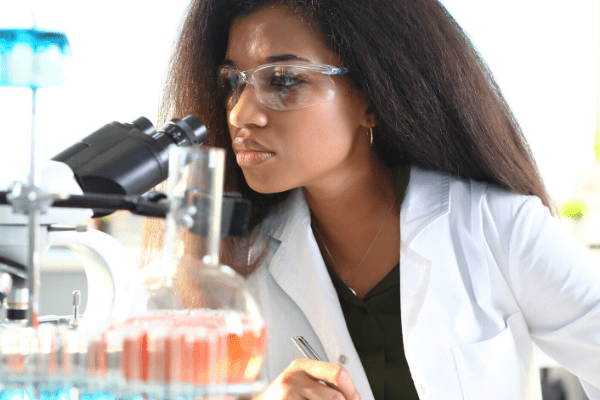Why are there fewer women, and even fewer Black, Indigenous Persons of Colour (BIPOC) women, in the sciences than men? Well, could it be that they simply don’t see themselves in the textbooks they spend years of their lives pouring through?
A new study surveying more than 1,000 names found in common biology textbooks in the US revealed that the most common scientists featured were white men, and that just over 13 percent were women.
Eight researchers took the names from ten of the most frequently used introductory biology textbooks assigned to undergraduate students on a biological sciences track in US colleges.
The study, titled, “A scientist like me: demographic analysis of biology textbooks reveals both progress and long-term lags” was published on The Royal Society Journal. It revealed 962 names in the textbooks were of men, and 145 scientists were women, representing a 1:7 ratio of women to men. That is seven men for every woman scientist.
Even more startling in their findings was the almost entire erasure of women who were BIPOC in the textbooks. In fact, not one single black woman was represented across any textbooks that were analysed. A mere 6.7 percent of scientists were from Black, Asian and Minority Ethnic backgrounds.
The researchers believe the numbers don’t reflect the demographic population of biology students in the US, and may be a contributing factor to the greater challenges women face in these fields.
Assessing the binary gender and race of featured scientists in textbooks is critical to identifying the subtle ways women and BIPOC individuals might find it harder to see themselves in the work they do.
Dr Cissy Ballen of Auburn University in Alabama was one of the lead researchers of the study. She told BBC’s Environment correspondent Helen Briggs that the names portrayed in the textbooks are not representative of their target audience, particularly among Asian and Hispanic women. She also explained that previous research has shown the importance of diverse, relatable role models in science.
“Not to be able to see anyone like them in these kinds of fundamental textbooks that they’re using, I think it would have a really negative effect,” she said.
Ballen’s team in Alabama conduct studies that reveal causes and consequences of gaps in science literacy, and highlight how educators can design their courses to minimise barriers to success.
Her team’s study also found that women scientists had higher numbers of representation in more contemporary textbooks than older textbooks. Textbooks published between 1900 and 1999 featured 55 women scientists, whereas textbooks published between 2000 to 2018 featured 87 women scientists.
The reason for these increasing figures may be due to either greater recognition of women scientists or an increase in the number of women in the field. Or both.
Representation of the number of racially diverse names also shifted over time, though the shift is so small it feels negligible. In the textbooks published between 1900 and 1999, 19 scientists of colour were named- a mere 3% of all featured scientists. Between 2000 and 2018, textbooks featured 27 scientists of colour – 8% of all featured scientists.
The researchers, which also included Sara Wood, Marjorie Weber and Ash Zemenick, said in their paper that textbooks should balance “an accurate portrayal of history while showcasing contemporary science that reflects a diverse population of learners.”
If these trends continue, the researchers believe it will be centuries before textbooks match the diversity of their readers in the US. In fact, based on their extrapolations, they predict that female representation in textbooks will reflect the general population in roughly a decade’s time, but will not reflect biology students for another 18 years.
Other estimates reveal more distressing realities.
“If textbook citations from Black/African American scientists continue at the same rate, it will take over 1000 years to reflect the general population in the United States (14%), and nearly 500 years to reflect the biology student population – that’s 7.7 percent,” they stated.

